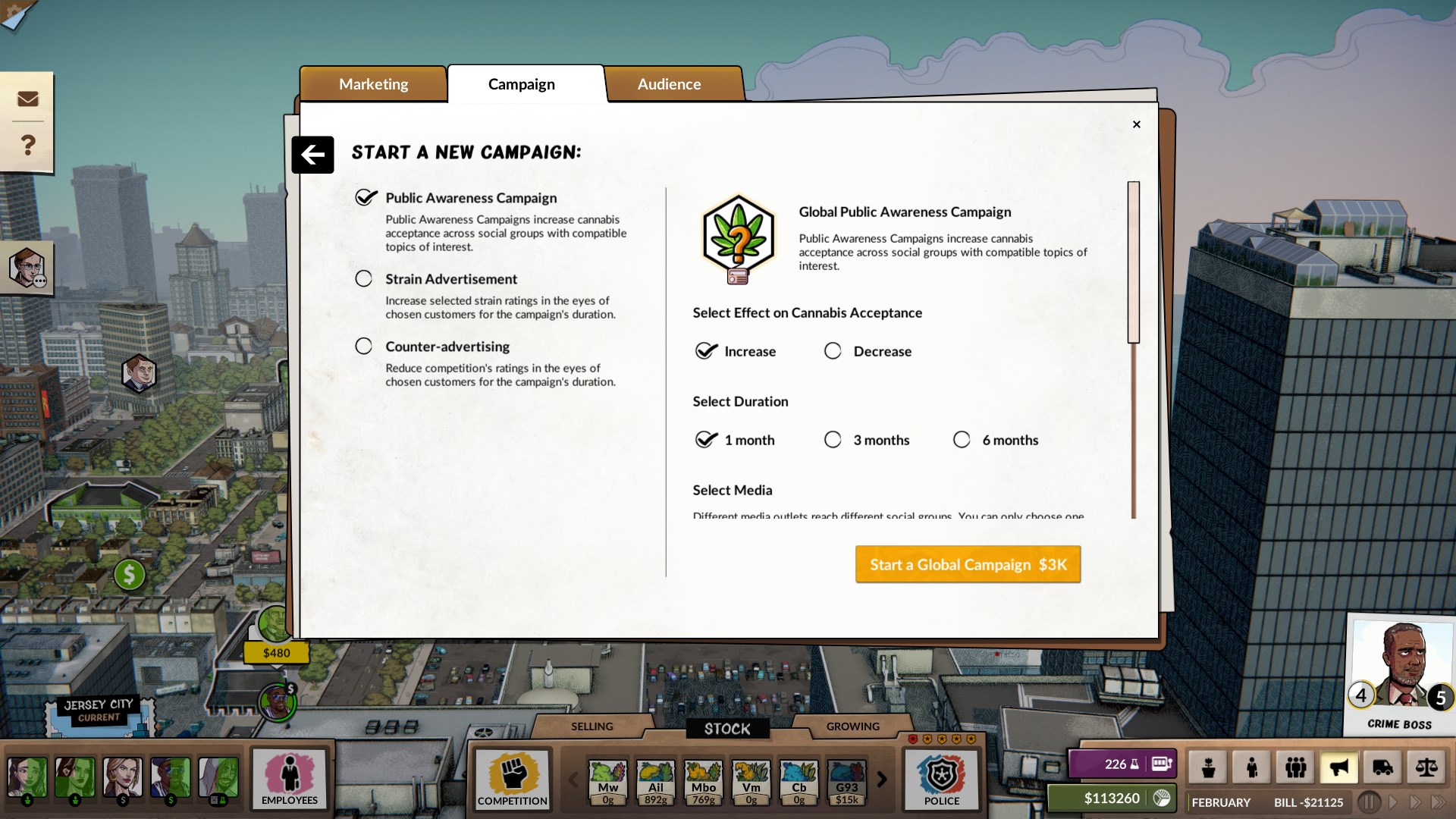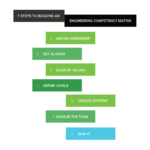Salesforce ‘acquires’ Salesforce.org for $300M in a wider refocus on the nonprofit sector
Salesforce yesterday announced a move to reposition how it provides software to and works with nonprofits like educational institutions and charities: the company announced that it would integrate Salesforce.org — which had been a reseller of Salesforce software and services to the nonprofit sector — into Salesforce itself as part of a larger, new nonprofit and education vertical. The new vertical, in turn, will be led by Rob Acker, the current CEO of Salesforce.org.
As part of the deal, Salesforce said it would pay $300 million in cash for all shares of Salesforce.org. The latter had existed as a California public benefit corporation, and now it will be converting into a California business corporation.
Salesforce said that the $300 million, in turn, will be distributed to another independent public benefit corporation called the Salesforce.com Foundation, which will use it for philanthropic purposes. Salesforce will be making further contributions to the Foundation, but did not specify the amount.
Salesforce also said that the combination will add between about $150 million and $200 million to the company’s full-year revenues, depending on when the deal closes.
Salesforce.org had been a vehicle for the company to provide nonprofits, educational institutions and philanthropic organizations free or very discounted licenses to use its software, to the tune of some $260 million in grants distributed to over 40,000 organizations. Salesforce will continue that practice, but now that effort, it seems, will come in line with a bigger business operation in which Salesforce will also develop and sell commercial software and services as well.
“Combining Salesforce and Salesforce.org into a new nonprofit and education vertical reinforces the strength of Salesforce’s philanthropic model,” the company notes. “Salesforce will extend this model by continuing to provide free and highly discounted software to nonprofits and education institutions around the world and investing in local communities through employee volunteering, strategic grants and matching employee giving up to $5,000 per employee annually.”
The new organization will include sales, marketing and the company’s Salesforce Customer Success Platform tailored for the nonprofit and education communities, and all future development of the company’s Nonprofit Cloud, Education Cloud and Philanthropy Cloud vertical applications.
Education, nonprofits and philanthropy might not be the most lucrative sectors that come to mind when you think of enterprise IT, but by virtue of their sheer size and ubiquity, and the fact that these organizations also very much need better technology to operate more efficiently, there is a big opportunity.
Some of that will firmly never catapult into the world of big money — and nor should it, in my opinion — but as Newsela and its backer TCV, and Microsoft, identified recently, schools are still big buyers of IT, and the same goes for other nonprofit and philanthropic organizations.
I’m not sure how Salesforce will bring the different sides of the business together, but it makes sense for the company to at least think of them in a more cohesive way, providing financial help where it’s needed and selling where it is not.
Salesforce said that it expects the deal to close in Q2 or Q3 of this year, pending approval from the Attorney General of California and “other customary closing conditions.”
Powered by WPeMatico
Adobe launches an Adobe XD accelerator to woo developers
The design world is in a state of full-fledged competition. Never in history have designers and their respective teams had so many options from which to choose. As both demand and supply grow, design players are working to build out the most comprehensive experience possible for their users.
Adobe, the incumbent in the space, is today launching the Adobe Creative Cloud Plugin Accelerator. Essentially, individuals and teams interested in taking some time to build out plugins for Adobe XD can get themselves three months at Adobe’s HQ, access to Adobe’s product, design and engineering team, as well as a $20K per person stipend to offset expenses.
To be clear, Adobe is not taking equity in these projects and participants will leave Adobe HQ with 100 percent ownership over their built IP.
The Adobe Creative Cloud Plugin Accelerator is supported by Adobe’s Fund for Design, a $10 million venture fund launched in May 2018. Both the fund and the accelerator are meant to open up Adobe, which has historically been a more closed ecosystem.
“For a company like Adobe, we’re flexing a new muscle by working with outside parties, in house, at Adobe Headquarters,” said design principal at Adobe Khoi Vinh. “It’s a real change of thinking from the Adobe of five or 10 years ago, but we’re embracing the community’s energy here.”
It was less than a year ago that Adobe opened up Adobe XD to integrate with other tools, such as UserTesting and Airtable, among others.
Vinh says that, for now, Adobe isn’t sure exactly how many teams or individuals it will be accepted into the accelerator. As it’s the first time the company has done something like this, it’s not adhering to a specific number of participants or a rigid curriculum. Vinh says that some teams might have a clear vision of what they’re building and simply seek one-to-one advice from the engineering or product teams, whereas others might want a more collaborative environment to brainstorm and build out the idea itself.
One thing that is clear, however, is that Adobe is looking for hyper-early-stage projects.
“What ended up happening with the Fund for Design is that the grants and investments made a lot of sense for people who were founders and already had companies,” said Vinh. “The Plugin Accelerator is meant to target people who are even earlier-stage than a founder and maybe not ready to start their own company.”
The hope is that teams of one to three will have the chance to build great plug-ins for Adobe XD, making the platform more attractive to clients as Figma and InVision make a run for those same users.
Adobe isn’t the first design tool firm to launch a venture fund. InVision launched the $5 million Design Forward Fund in late 2017.
Folks interested in the Creative Cloud Plugin Accelerator can apply here.
Powered by WPeMatico
Logistics startup Zencargo raises $20M to take on the antiquated business of freight forwarding
Move over, Flexport. There is another player looking to make waves in the huge and messy business of freight logistics. Zencargo — a London startup that has built a platform that uses machine learning and other new technology to rethink how large shipping companies and their customers manage and move cargo, or freight forwarding as it’s known in the industry — has closed a Series A round of funding of about $19 million.
Zencargo’s co-founder and head of growth Richard Fattal said in an interview that the new funds will be used to continue building its software, specifically to develop more tools for the manufacturers and others who use its platform to predict and manage how cargo is moved around the world.
The Series A brings the total raised by Zencargo to $20 million. This latest round was led by HV Holtzbrinck Ventures . Tom Stafford, managing partner at DST Global; Pentland Ventures; and previous investors Samos, LocalGlobe and Picus Capital also participated in the round.
Zencargo is not disclosing its valuation, nor its current revenues, but Fattal said that in the last 12 months it has seen its growth grow six times over. The company (for now) also does not explicitly name clients, but Fattal notes that they include large e-commerce companies, retailers and manufacturers, including several of the largest businesses in Europe. (One of them at least appears to be Amazon: Zencargo provides integrated services to ship goods to Amazon fulfillment centers.)
Shipping — be it by land, air or sea — is one of the cornerstones of the global economy. While we are increasingly hearing a mantra to “buy local,” the reality of how the mass-market world of trade works is that components for things are not often made in the same place where the ultimate item is assembled, and our on-demand digital culture has created an expectation and competitive market for more than what we can source in our backyards.
For companies like Zencargo, that creates a two-fold opportunity: to ship finished goods — be it clothes, food or anything — to meet those consumer demands wherever they are; and to ship components for those goods — be it electronics, textiles or flour — to produce those goods elsewhere, wherever that business happens to be.
Ironically, while we have seen a lot of technology applied to other aspects of the economics equation — we can browse an app anytime and anywhere to buy something, for example — the logistics of getting the basics to the right place are now only just catching up.
Alex Hersham, another of Zencargo’s co-founders who is also the CEO (the third co-founder is Jan Riethmayer, the CTO), estimates that there is some $1.1 trillion “left on the table” from all of the inefficiencies in the supply chain related to things not being in stock when needed, or overstocked, and other inventory mistakes.
Fattal notes that Zencargo is not only trying to replace things like physical paperwork, faxes and silos of information variously held by shipping companies and the businesses that use them — but the whole understanding and efficiency (or lack thereof) that underlies how everything moves, and in turn the kinds of businesses that can be built as a result.
“Global trade is an enormous market, one of the last to be disrupted by technology,” Fattal said. “We want not just to be a better freight forwarder but we want people to think differently about commerce. Given a choice, where is it best to situate a supplier? Or how much stock do I order? How do I move this cargo from one place to another? When you have a lot of variability in the supply chain, these are difficult tasks to manage, but by unlocking the data in the supply chain you can really change the whole decision making process.”
Zencargo is just getting started on that. Flexport, one of its biggest startup competitors, in February raised $1 billion at a $3.2 billion valuation led by SoftBank to double down on its own freight forwarding business, platform and operations. But as Christian Saller, a partner at HV Holtzbrinck Ventures describes it, there is still a lot of opportunity out there and room for more than one disruptor.
“It’s such a big market that is so broken,” he said. “Right now it’s not about winner-take-all.”
Powered by WPeMatico
Leapwork raises $10M for its easy process automation platform, plans US expansion
Most work involving computers is highly repetitive, which is why companies regularly have developers write code to automate repetitive tasks. But that process is not very scalable. Ideally, individuals across an entire business would be able to create automated tasks, not just developers. This problem has created a new category called process automation. Startups in this space are all about making companies more efficient.
Most of the existing tools on the market are code-based and complicated, which tends to make it tough for non-technical people to automate anything. Ideally, you would allow them to train software robots to handle repetitive and mundane tasks.
This is the aim of Leapwork, which today announces a Series A investment of $10 million, from London’s DN Capital and e.ventures out of Berlin. The company already has many clients, from tier-one banks and global healthcare firms to aerospace and software companies, and now plans to expand in the U.S. Its customers typically already have a lot of experience with tools such as Tricentis, MicroFocus, UiPath and BluePrism, but employ Leapwork when code-based tools prove limiting.
Founded in 2015 and launched in April 2017, Leapwork has an entirely visual system, backed by a modern tech stack. Instead of using developer time, staff automate tasks themselves, without writing any code, with a simple user interface that is likened to learning PowerPoint or Excel. Leapwork estimates it can save 75 percent of an employee’s time.
Christian Brink Frederiksen, Leapwork’s CEO and co-founder said: “About half of our business comes from the U.S. and this investment will enable us to serve those customers better, as well as reaching new ones.”
Leapwork has found traction in the areas of software testing, data migration and robotic process automation in finance and healthcare. Based in Copenhagen, Denmark, Leapwork has offices in London, U.K., San Francisco, USA, Minsk, Belarus, and Gurugram, India.
Thomas Rubens, of DN Capital, said: “From the outset we were impressed by Leapwork’s product, which we believe will change the automation landscape. Every company has repetitive tasks that could be automated and few have the developer resource to make it happen.”
The founders began in June 2015 in Copenhagen, Denmark, after having worked for almost two decades in enterprise software and business-critical IT. They launched their first pilot in July 2016 and, after working with Global2000 pilot customers in the U.S. and Europe, went live with the Leapwork automation platform in March 2017.
Prior to this funding the company was bootstrapped by the founders, as both had previous successful exits.
Powered by WPeMatico
Dropbox challenger pCloud just became profitable
Between Dropbox, Google Drive, Microsoft OneDrive and iCloud Drive, consumer cloud storage is a crowded space. And yet, a small company called pCloud has managed to attract more than 9 million users over the past five years. The company recently reached profitability with a team of 32 people.
If you’re familiar with Dropbox, pCloud won’t surprise you. The service lets you back up and sync files across your devices. You get 10GB for free and you can pay for more storage and features.
Unlike Dropbox or OneDrive, pCloud acts more like an external hard drive. When you install the app on your computer, everything stays in the cloud by default. On macOS, the company uses Fuse to create a new virtual hard drive in the Finder.
If you right-click on a folder, you can choose to download it on your computer for offline access. It creates a new folder on your local hard drive that remains in sync with your pCloud account. Similarly, you can add existing folders to pCloud from the settings panel. These folders will remain permanently in sync as long as you keep the app running on your computer.
In addition, pCloud supports LAN syncing, which means that if you have multiple devices on the same Wi-Fi network, they’ll transfer files using your local network instead of the internet. Dropbox also has this feature.
On mobile, you can access your files using the mobile app. Like many competitors, pCloud also lets you automatically back up your camera roll to your pCloud account.
Now let’s talk about security. Just like other cloud storage services, pCloud doesn’t encrypt your files by default — pCloud uses encryption on files while they’re in transit though. When you sync a file using pCloud, the company can theoretically retrieve that file. If you’re serious about privacy, you shouldn’t use cloud storage services at all.
But pCloud also offers an optional add-on called pCloud Crypto. This feature lets you create a secret folder that you can unlock with a password. When you add a file to this folder, it is encrypted on your device and then sent to pCloud’s server. If you don’t have that password, you can’t unlock the file. It means that pCloud and authorities can’t retrieve those files without you.
When it comes to pricing, pCloud costs $3.99 per month for 500GB of storage and $7.99 per month for 2TB of storage; pCloud Crypto costs an additional $4.99 per month. You also can buy lifetime subscriptions for $175 for 500GB, $350 for 2TB and $125 for Crypto. This is expensive, but it could convince some users who are not into subscriptions.
Even though it seems incredibly complicated to compete with Microsoft, Google, Apple and Dropbox, I’m glad to see that it’s still possible to build an alternative product with some differentiating features. Although pCloud will probably never be as big as Dropbox, it is an interesting company to follow.
Powered by WPeMatico
Chilly reception for marijuana tycoon game shows games industry’s backwards stance on drugs
Intense and graphic violence is something we’ve come to simply expect from games, but sexual and other adult themes are still largely taboo — including, as publisher Devolver Digital is learning, drugs. Even if the game in question is a relatively serious tycoon-type look at the current (and legal!) business of selling weed.
Devolver is no stranger to controversy; it has published and helped develop dozens of games and many of them have featured the kind of graphic violence that sets off those who still see the medium as a corruptive, fundamentally debased one. And to be fair, the likes of Hotline Miami aren’t going to change any minds.
But for the company’s first original commissioned IP, it had the idea of assembling a game in the popular “tycoon” genre, but focused on the emerging and popular sector of growing marijuana.
Obviously this is somewhat controversial, but the plant is legal in many states and countries already and on its way in plenty of others. This isn’t the time or place for a full evaluation of the scheduling system and the war on drugs, but it suffices to say that it is a complex and interesting business ecosystem that’s teetering on the edge of widespread acceptance. That makes it a bit edgy, but also fresh and relevant — perfect, Devolver thought, to build a game around. So they made Weedcraft, Inc.
Unfortunately, the company’s co-founder Mike Wilson told me the other day, they underestimated how square the gaming industry is.
“This is definitely the hardest game I’ve had to market, and that’s saying something,” Wilson told me. “It has been a fucking nightmare. The fact that we’re still so afraid of a topic like weed instead of the murder simulators you can market any time, anywhere, it’s shocking.”
Console game stores were reluctant to even carry it, and warned Devolver that it would never be featured, which is a death sentence for a game’s discoverability. They couldn’t get ads approved on Facebook or Instagram, and the person who submitted them even had his account suspended. And just this week, streamers trying out the game on YouTube had their videos demonetized.
The only stores that didn’t buck were Steam, which is largely content-agnostic, and GOG, a popular DRM-free storefront.
Why, though? This isn’t a game about smoking blunts or cutting dime bags with oregano to sell to middle school kids.
“This isn’t a pro-legalization game. This is a tycoon game. You don’t do drugs in the game!” said Wilson. “You can play as a totally legal, scrupulous businessperson. We did all this research with like, dispensaries, geneticists, lawyers, we were worried about cultural sensitivity with the subject matter, things like how much more black people get jailed for it. We wanted it to be representative of all the social issues involved. It’s kind of like doing a game about booze in the prohibition era — like, what an interesting industry to study, right?”
It’s not that the companies involved here — Microsoft, Sony, YouTube and so on — are applying some invisible rules. The rules are there; when I contacted YouTube for comment, they pointed me to the list of guidelines for “advertiser-friendly content.” And plain as day there’s the one about drugs: “Video content that promotes or features the sale, use, or abuse of illegal drugs, regulated drugs or substances, or other dangerous products is not suitable for advertising.”
It’s just a bit weird to me still that we have this backwards, puritan approach to this stuff. Think of how much vile garbage is on YouTube and how the most popular games in the world glorify guns and death. But a recreational drug legal in many places and generally well thought of, not to mention a massive and growing business — that’s beyond the pale.
I understand YouTube doesn’t want people doing bong-clearing competitions, and console makers want to appear family-friendly so they don’t lose that teen and tween market. But surely we can be adults about this.
Gaming is maturing to be an interactive storytelling medium that encompasses serious issues, but the industry is holding itself back by its squeamishness about adult themes. And that feeds into the puritanical objections from misguided commentators, who go nuts over romancing an alien in Mass Effect or the ridiculous “Hot Coffee” thing in GTA, but don’t acknowledge the sophisticated storytelling of Return of the Obra Dinn, or subversive commentary of Papers, Please, or the impressive period recreation of an Assassin’s Creed.
Drugs are a complex and controversial topic. I get that some people want to stay hands-off. But when that hands-off stance doesn’t apply to graphic violence, sexism, and other sore spots, it comes off as prudish and hypocritical.
Powered by WPeMatico
OpenAI Five crushes Dota2 world champs, and soon you can lose to it too
Dota2 is one of the most popular, and complex, online games in the world, but an AI has once again shown itself to supersede human skill. In matches over the weekend, OpenAI’s “Five” system defeated two pro teams soundly, and soon you’ll be able to test your own mettle against — or alongside — the ruthless agent.
In a blog post, OpenAI detailed how its game-playing agent has progressed from its younger self — it seems wrong to say previous version, since it really is the same extensive neural network as many months ago, but with much more training.
The version that played at Dota2’s premiere tournament, The International, gets schooled by the new version 99 percent of the time. And it’s all down to more practice:
In total, the current version of OpenAI Five has consumed 800 petaflop/s-days and experienced about 45,000 years of Dota self-play over 10 realtime months (up from about 10,000 years over 1.5 realtime months as of The International), for an average of 250 years of simulated experience per day.
To the best of our knowledge, this is the first time an RL [reinforcement learning] agent has been trained using such a long-lived training run.
One is tempted to cry foul at a data center-spanning intelligence being allowed to train for 600 human lifespans. But really it’s more of a compliment to human cognition that we can accomplish the same thing with a handful of months or years, while still finding time to eat, sleep, socialize (well, some of us) and so on.
Dota2 is an intense and complex game with some rigid rules but a huge amount of fluidity, and representing it in a way that makes sense to a computer isn’t easy (which likely accounts partly for the volume of training required). Controlling five “heroes” at once on a large map with so much going on at any given time is enough to tax a team of five human brains. But teams work best when they’re acting as a single unit, which is more or less what Five was doing from the start. Rather than five heroes, it was more like five fingers of a hand to the AI.
Interestingly, OpenAI also discovered lately that Five is capable of playing cooperatively with humans as well as in competition. This was far from a sure thing — the whole system might have frozen up or misbehaved if it had a person in there gumming up the gears. But in fact it works pretty well.
You can watch the replays or get the pro commentary on the games if you want to hear exactly how the AI won (I’ve played but I’m far from good. I’m not even bad yet). I understand they had some interesting buy-back tactics and were very aggressive. Or, if you’re feeling masochistic, you can take on the AI yourself in a limited-time event later this week.
We’re launching OpenAI Five Arena, a public experiment where we’ll let anyone play OpenAI Five in both competitive and cooperative modes. We’d known that our 1v1 bot would be exploitable through clever strategies; we don’t know to what extent the same is true of OpenAI Five, but we’re excited to invite the community to help us find out!
Although a match against pros would mean all-out war using traditional tactics, low-stakes matches against curious players might reveal interesting patterns or exploits that the AI’s creators aren’t aware of. Results will be posted publicly, so be ready for that.
You’ll need to sign up ahead of time, though: The system will only be available to play from Thursday night at 6 PM to the very end of Sunday, Pacific time. They need to reserve the requisite amount of computing resources to run the thing, so sign up now if you want to be sure to get a spot.
OpenAI’s team writes that this is the last we’ll hear of this particular iteration of the system; it’s done competing (at least in tournaments) and will be described more thoroughly in a paper soon. They’ll continue to work in the Dota2 environment because it’s interesting, but what exactly the goals, means or limitations will be are yet to be announced.
Powered by WPeMatico
7 steps to building an engineering competency matrix
Every engineer deserves a clear growth path so they can understand, plan, and execute on meaningful career growth. Providing a framework for this growth (we call ours a competency matrix; it’s also known as a career ladder, or professional development ladder) is important work, and the responsibility of any organization that wants to nurture and grow its employees.
Back at the beginning of 2018, we had 32 developers and a plan to double throughout the year, we already had a competency matrix, but it was woefully outdated. It focused on our more junior levels, maxing out at a level which some developers had already reached. It was also misaligned with the skills our organization had grown to value, which meant in practice, we often ignored it. It was time for a re-design.
Building a new competency matrix was a learning process, and a lengthy one, taking about eight months to complete. Along the way we discovered things we valued, as well as what the keys steps to building a career ladder are (and which ones are wasteful). While every matrix is different, and will reflect the values of the organization that wrote it, the process of producing a succinct career ladder to guide your team is consistent.
When we published our new Engineering competency matrix in December, we received many emails from teams saying they were working on similar systems. Because of this feedback, I want to share the steps we went through, and the lessons we learned, to help teams reach a productive conclusion with much less waste, and in much shorter time, than trying to figure it out from scratch.
If you want to provide your employees and reports with a clear, agreed-upon and well-defined path for growth within your organization, then this is for you.

Image via CircleCI
Step 1: Make this someone’s top priority
In retrospect, this was the biggest factor in our lengthy redesign process. I had initially taken on this project as one of my many side projects. The only time I had to dedicate to the matrix were early mornings, late nights, and weekends. This was a passion project for me, and I loved working on it, but I was not able to give it the care it needed.
Powered by WPeMatico
Airbnb officially owns HotelTonight
Airbnb has completed its acquisition of the last-minute hotel booking application, HotelTonight, the company announced on Monday. The deal is Airbnb’s largest M&A transaction yet, and will accelerate the home-sharing giant’s growth as it gears up for an initial public offering.
Airbnb reportedly began talks to acquire HotelTonight months ago, and finally confirmed its intent to acquire the business in early March. Reports indicated a price tag of more than $400 million; Airbnb declined to comment on the size of the deal.
As part of the deal, HotelTonight co-founder and chief executive officer Sam Shank will lead the boutique hotel category at Airbnb, one of the company’s newer units meant to help it scale beyond treehouses and quirky homes.
“When we founded HotelTonight, we sought to reimagine the hotel booking experience to be more simple, fast and fun, and to better connect travelers with the world’s best boutique and independent hotels,” Shank said in a statement. “We are delighted to take this vision to new heights as part of Airbnb.”
Shank launched the San Francisco-based company in 2010. Most recently, it was valued at $463 million with a $37 million Series E funding in 2017, according to PitchBook. HotelTonight raised a total of $131 million in equity funding from venture capital firms including Accel, Battery Ventures, Forerunner Ventures and First Round Capital.
Powered by WPeMatico
YC alum Keeper raises $1.6M to help gig workers pay taxes
Every year around this time, Uber drivers, Wag dog walkers, Bird scooter chargers, social media influencers and other gig economy workers face the unsightly challenge of paying their taxes.
Companies like Uber and Lyft classify their drivers as independent contractors, which means you aren’t given any benefits and the company doesn’t withhold any of your taxes. This puts gig workers in a tough position come tax day, especially if they aren’t prepared to shell out big sums to the IRS.
Keeper, a startup that’s just graduated from the Y Combinator startup accelerator, is here to make taxes a lot easier for that demographic and to save them as much money as possible.
Founded by childhood buddies and former debate partners Paul Koullick and David Kang, the San Francisco-based company has raised $1.65 million on a $10 million valuation in a round led by Jake Jolis of Matrix Partners.

Keeper co-founders Paul Koullick (left) and David Kang
The pair entered YC this winter with a big idea and little to show for it. Come March, they had developed a full-fledged product and accumulated 200 paying customers. With their first round of funding, they plan to add to their small but growing team and acquire 10,000 customers in the next 18 months.
“There are some companies that are trying to go very broad and trying to cover the whole spectrum of benefits; we’re just trying to go really deep on taxes,” Kang told TechCrunch. “This is a pain point. This is where people are definitely leaving the most money on the table.”
Keeper guesses the average gig worker in the U.S. is overpaying their taxes by more than 20 percent, or about $1,550 for those making more than $25,000 per year. Why? Because these independent contractors aren’t claiming the tax write-offs available to them, like phone bills, car maintenance fees and even a Spotify subscription for drivers.
“If you’re a dog walker, there are so many things you need to be writing off, like your poop bags, your extra leashes, your parking,” Koullick told TechCrunch. “This population needs the guidance of an accountant, but they can’t afford one and we’re trying to create this third option.”
Like a personal accountant, Keeper monitors gig workers’ expenses all year in search of possible tax deductions, saving each user $173 per month on average, it estimates. The startup uses Plaid to follow its customers’ transaction history, and once per day sends a text message asking if there are any tax write-offs to note. Over time, it gets smarter and smarter, keeping the SMS questions to a minimum.
Keeper doesn’t fully file taxes for 1099 workers yet, but will begin offering a quarterly tax filing service in June. Next year, it plans to offer a full-year tax-filing service.

Koullick, Keeper’s chief executive officer, worked in product at Square before joining another startup, called Stride, where he built and scaled Stride Tax, a mileage and expense-tracking app. Kang, for his part, has spent most of his post-graduate career at a trading firm in Chicago, focused on quantitative modeling. The two toyed with a few startup ideas before landing on Keeper’s tax business.
“We wanted to build something that actually mattered to real people,” Koullick explained. “And we wanted to do it in the financial space where we were happy to wade through ugly details and systems on their behalf.”
Keeper isn’t the only recent YC alum focused on the growing gig economy. Another, Catch, sells health insurance, retirement savings plans and tax-withholding services directly to freelancers, contractors or anyone uncovered. Given the rapid rise of Uber and other gig platforms, it’s no wonder YC startups are tapping into the various business opportunities available there.
“We’re willing to tackle some of these topics that are kind of boring and mundane and really intensive,” Kang added. “Like the average person doesn’t want to think about taxes or filling out forms. We saw that as an opportunity for us to step in and be like, hey, we’ll take it.”
Powered by WPeMatico


